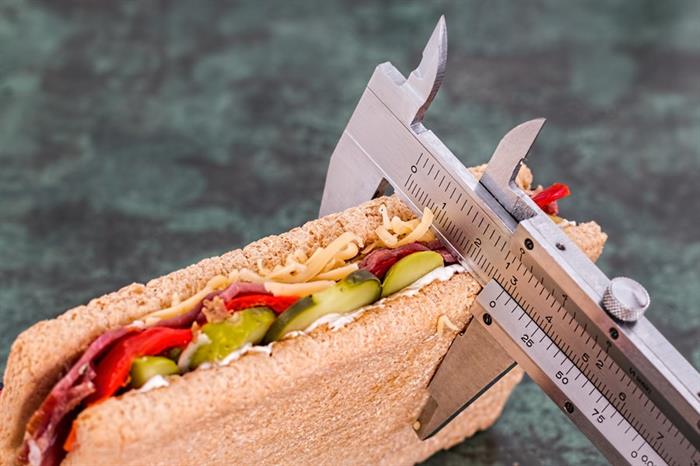Are You Watching Your COGS? If not, It Could Cost Your Small Business
By Guest Contributor Jack Harwell, Business Adviser, Kansas Small Business Development Center
Want to get the most out of your sales dollar? Get acquainted with the cost of goods sold, or COGS for short. It’s something you should be keeping tabs on every single day. If you aren’t, it could cost you.
But before we get into the weeds, be sure to check out our last post, where we explored the most important word in business (spoilers … it’s “margin”). We broke down margin so you can see the powerful insight it can provide into the financial performance of your business. (And it’s all in layman’s terms, so no need for a business degree to reap the benefits of doing some simple math.) We also took a look at variable cost, fixed cost and COGS), all super important stuff if you want your business to succeed. If you want to check that out, we’ll wait here until you get back.
Today, we’re talking about COGS, which has two components: things you buy and wages you pay. Depending on the business, COGS can be what you pay for the merchandise you sell, the amount you pay someone to provide a service or the cost of materials and labor to build your product.
Knowing COGS will help you wring the most you can out of every sales dollar and help you monitor when the cost of goods sold gets out of control. (Who doesn’t want that?)
Some quick notes:
Here, margin is defined as the amount of every sales dollar that’s left over after we pay for variable costs, which we call COGS. Margin = Sales – COGS. If you want to go deeper with margin, head over to our in-depth explainer that reveals how to make the concept work for your business.

Cogs is a real time-management challenge
Fixed costs, otherwise known as overhead, change little over time and don’t need attention very often. For example, your rent may change when the lease expires, and your electric bill could increase if you leave the lights on all night. But normal activities in your business don’t have much effect on your fixed cost.
On the other hand, COGS is very sensitive to change and can get out of hand quickly. Take this pizza parlor example, where the number of pepperonis placed on the pizza can change with each pie you make. In a rush, the cook may not be as careful and might put too much meat on the pizza. The extra cost of that meat can erode margins, and managing it carefully prevents your food cost from taking too much of your sales dollar.

Measure, control and reduce
You can see why you should put managing COGS at the top of your list of things to do every day. And measuring COGS is the first step toward managing it. Even though your sales numbers (and COGS) may be up or down from day-to-day, the percentage of margin (that’s Margin ÷ Sales) will remain constant if you have it under control. A change in margin percent means a lack of control. Frequently monitoring your margin is a great way to keep tabs on COGS.
Once you start monitoring your margin, you’ll get a feel for what’s normal for your business. Then, you can compare your margins to others in your industry. Your local SBDC (like the Kansas SBDC at Johnson County Community College) has access to reports that show you industry norms. Although every business is different, yours should have similar margins to businesses like yours.
If your margins fall outside of the normal range, you need to take action immediately. Any delay will erode your profits. But monitoring and reacting isn’t enough to control COGS and margins. There are proactive steps you can take to maintain control and even reduce your COGS.
[[CTA]]
You can start with negotiating lower prices from your suppliers. Besides haggling over price, there are other ways to work with your suppliers to reduce COGS. Find good quality vendors and consolidate your purchases with them. Buying good product can also reduce COGS because you aren’t throwing out defective goods.
Once the merchandise arrives at the back door, count it and organize it so you don’t lose anything — and so nothing is stolen. Employee and customer theft is a sad fact of life, so knowing what you have and where it is will help you keep an eye on it. Periodically count and recount so you can detect anything suspicious. Organizing the merchandise and properly storing it can also reduce the risk of damaged goods.
Set your standards
Labor cost is especially challenging to manage. It requires your team members keep accurate time records when making products. The cost of this time is then applied to COGS. So measure how much time it takes to deliver your product or service and establish time standards. Post these standards and train your employees on how to meet them. Better yet, ask your employees how to reduce the time. Share the numbers with them and challenge them to beat the standards. Everyone enjoys appreciation, so even a genuine pat on the back can get them jazzed about reducing costs.
You should also record the best way to do things with procedures and train your employees how to follow these procedures. If someone discovers a better way, immediately update your procedures and re-train. The procedures should be visible and simple to understand. Rather than a bunch of words that most people won’t read, post a picture in the workspace with arrows and notes that employees can digest at a glance. Many people are visual learners, so a video documenting the procedures is even better.

Use margin as a strategy
Now, this is how you can take everything we’ve covered and make COGS work for your business.
First things first, when we mention a “category,” we’re talking about a group of items or services similar in function, price and cost. And you can leverage these categories to increase your revenue. Many businesses offer several categories of products and services. Different categories often have different margins. For a restaurant, alcoholic drinks and desserts have a much higher margin than the main attraction — the meal. That’s why a good server will try to get you to buy drinks and desserts with your meal.
Sales mix is the percentage of sales for each category. Changing your sales mix can change your margins if the underlying category margins are different. A strategy of selling more of the high margin categories and fewer of the low margin categories will increase your overall margins. Although those lower margin products may be critical to your mission, shifting the sales mix to increase margins could be a great strategy to increase your gross profit.
Now you know what margin is and how COGS affects it, you are on your way to managing and improving your profitability. Our next installment will explore ways to manage overhead and how to use overhead and margin to determine break-even. Zero sales doesn’t sound very exciting, but break-even is an important number to know and understand. It’s used to evaluate capital expenditures or additional staff. We’ll explore break-even in more detail in a later post. Stay tuned.





Leave a Reply